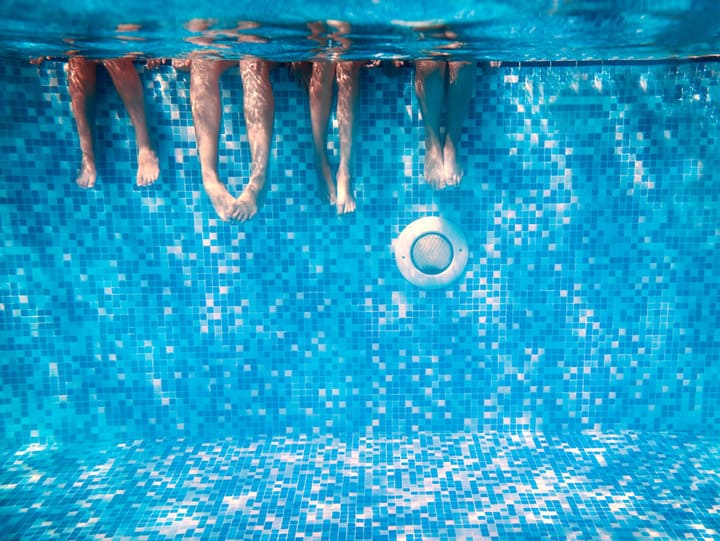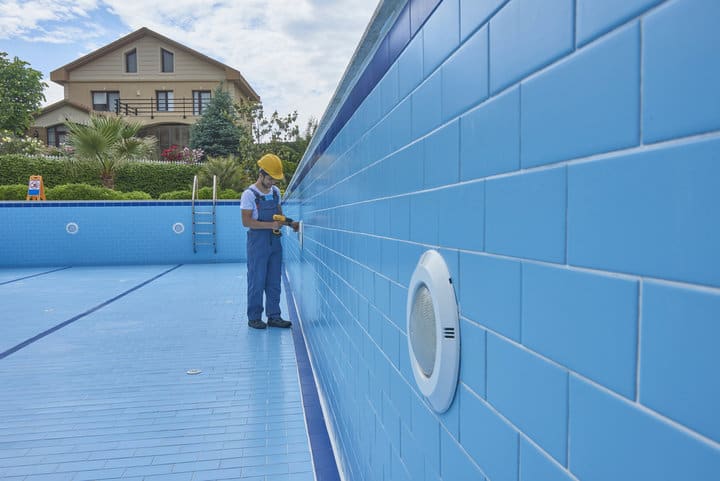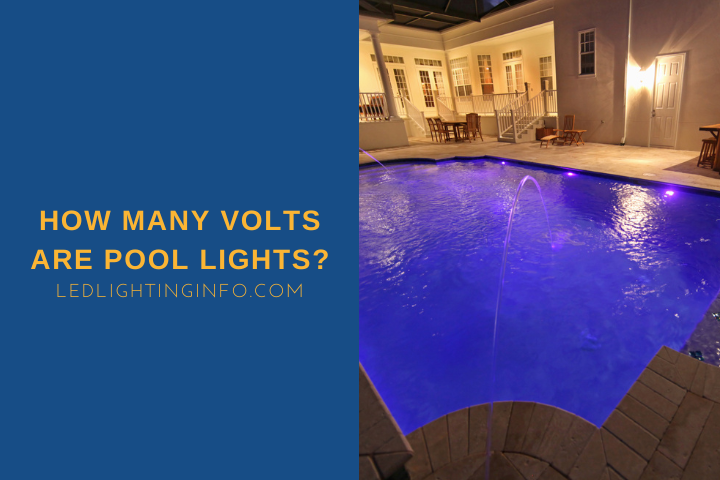If you’re planning on building a pool or adding lights to an existing pool, you’ll want to know the voltage of the lights you’re using.
After all, that makes a massive difference in how you power them.
If you don’t connect them to the mains correctly, you could either massively underpower the lights, meaning they won’t work, or overpower them and cause them to blow out.
So, what voltage are pool lights?
Pool lights can come in both 120V and 12V options. Most modern pool lights are low-voltage 12V lights, especially with the move to contemporary LEDs, which can be just as bright as older 120V halogens or incandescent. 12V is the safer option, too.
Obviously, this is important if you already own a pool with lights too, so let’s take a look at:
- How you can tell whether your lights are 12V or 120V
- Whether low voltage pool lights are safer
- If it’s possible to convert 120V pool lights to 12V
How To Tell If Pool Light Is 12V Or 120V?

There are two ways that you can tell if a pool light is either 12V or 120V. One involves looking at the wiring and the other at the bulb.
So if your lights are already installed, it’s easier to look at the wiring.
To be specific, you’re looking to see whether the lights are either plugged straight into the mains/wired into the circuit breaker or if they are wired into a transformer first.
The job of a transformer is to step the mains voltage down to low voltage levels. So only low voltage lights are going to be wired into one.
If the lights are wired into the mains directly, they run on the full mains current of 120V.
If you have bulbs that still need to be installed, you can also see the voltage they are rated for by looking at the back of the bulb next to the wiring.
It’ll be printed here – it has to be, for safety reasons.
So you’ll be able to see whether you’re dealing with 120V bulbs that need to be wired into the mains or 12V low-voltage bulbs.
Difference Between 12V And 120V Pool Light
Low-voltage lights are not exclusive to LEDs – you can get low-voltage halogen lights. When incandescent lights were more popular there were 12V options for those as well.
Back then, low-voltage lights were less commonly used for pool lights because they were usually not as bright. So other benefits were ignored because the performance was important.
But since LEDs have become much more widely used as pool lights, the performance of low voltage and 120V light is the same.
The only differences come from how they are wired and their safety levels.
With 12V lights, they need to be connected to a transformer.
They also don’t legally have to be connected to a GFCI – that only applies to anything 15 volts or higher.
120V lights don’t need a transformer, but they absolutely must be wired into a circuit with a GFCI for the safety of everyone in the pool.
Otherwise, the circuit won’t be cut out if there is a ground fault, which could electrify the pool.
Are Low Voltage Pool Lights Safer?

Low voltage lights are a popular choice for pools now that the performance is as good as 120V lighting because they are safer.
However, “safer” does not mean “safe.”
But in general, if something were to go wrong and the pool water was to become electrified by low voltage lights, you will still get electrocuted, but it won’t necessarily be fatal.
I have to say “necessarily” because while the shock isn’t enough to stop your heart, it could still cause severe problems if you have a pacemaker fitted or if you are shocked while in deep water.
Because any current can cause temporary muscle paralysis, and if you suddenly can’t swim, especially if you’re face down, that’s still bad news.
Still, 12-volt electrocution is much preferable to be hit with, as 120 volts is highly likely to kill or severely injure you.
Of course, no electrocution is always the best option!
Can I Convert 120V Pool Lights To 12V?

If you currently have 120-volt pool lighting installed and want to switch to 12-volt lighting, you can.
However, it will mean installing a transformer for your lights and replacing the fixtures.
You need to make sure you buy a transformer that can handle the wattage of the lights you’ve selected for your pool and that’s rated for use for pool lights too.
Install it so you can still use the pre-existing drilled holes from the 120V wiring but within easy reach of the mains to plug it in too.
It will be fine outdoors if that’s best.
Then, follow the best practice to convert your pool lights to LEDs, and you will be up and running again in no time, with much safer lighting.
You don’t even need to drain your pool for any of this – as long as you can access the old wires for your 120V lights, you can tape the wires for the new lights to them, and pull them through the conduit with the pool still filled.
Final Words
Most modern pool lighting installations will use low-voltage LEDs.
LEDs offer many benefits over older lighting types. They work just as effectively on low voltages, which is also safer for anyone using the pool.
You don’t have to rush to swap 120V lights for new ones if yours are working fine – electrocutions in pools are extremely rare, and most pool lights are fine.
But when they next burn out, consider switching to low-voltage ones.
Does your pool have 120V or 12V lights installed? Did you know that already, or did you have to check?

